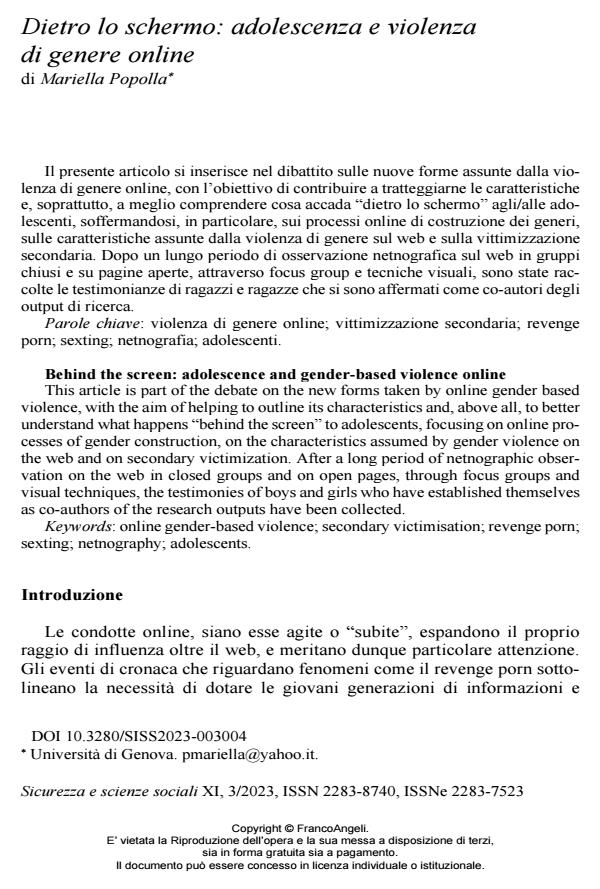Dietro lo schermo: adolescenza e violenza di genere online
Titolo Rivista SICUREZZA E SCIENZE SOCIALI
Autori/Curatori Mariella Popolla
Anno di pubblicazione 2024 Fascicolo 2023/3
Lingua Italiano Numero pagine 19 P. 42-60 Dimensione file 212 KB
DOI 10.3280/SISS2023-003004
Il DOI è il codice a barre della proprietà intellettuale: per saperne di più
clicca qui
Qui sotto puoi vedere in anteprima la prima pagina di questo articolo.
Se questo articolo ti interessa, lo puoi acquistare (e scaricare in formato pdf) seguendo le facili indicazioni per acquistare il download credit. Acquista Download Credits per scaricare questo Articolo in formato PDF

FrancoAngeli è membro della Publishers International Linking Association, Inc (PILA)associazione indipendente e non profit per facilitare (attraverso i servizi tecnologici implementati da CrossRef.org) l’accesso degli studiosi ai contenuti digitali nelle pubblicazioni professionali e scientifiche
Il presente articolo si inserisce nel dibattito sulle nuove forme assunte dalla violenza di genere online, con l’obiettivo di contribuire a tratteggiarne le caratteristiche e, soprattutto, a meglio comprendere cosa accada “dietro lo schermo” agli/alle adolescenti, soffermandosi, in particolare, sui processi online di costruzione dei generi, sulle caratteristiche assunte dalla violenza di genere sul web e sulla vittimizzazione secondaria. Dopo un lungo periodo di osservazione netnografica sul web in gruppi chiusi e su pagine aperte, attraverso focus group e tecniche visuali, sono state raccolte le testimonianze di ragazzi e ragazze che si sono affermati come co-autori degli output di ricerca.
Parole chiave:violenza di genere online; vittimizzazione secondaria; revenge porn; sexting; netnografia; adolescenti.
Mariella Popolla, Dietro lo schermo: adolescenza e violenza di genere online in "SICUREZZA E SCIENZE SOCIALI" 3/2023, pp 42-60, DOI: 10.3280/SISS2023-003004